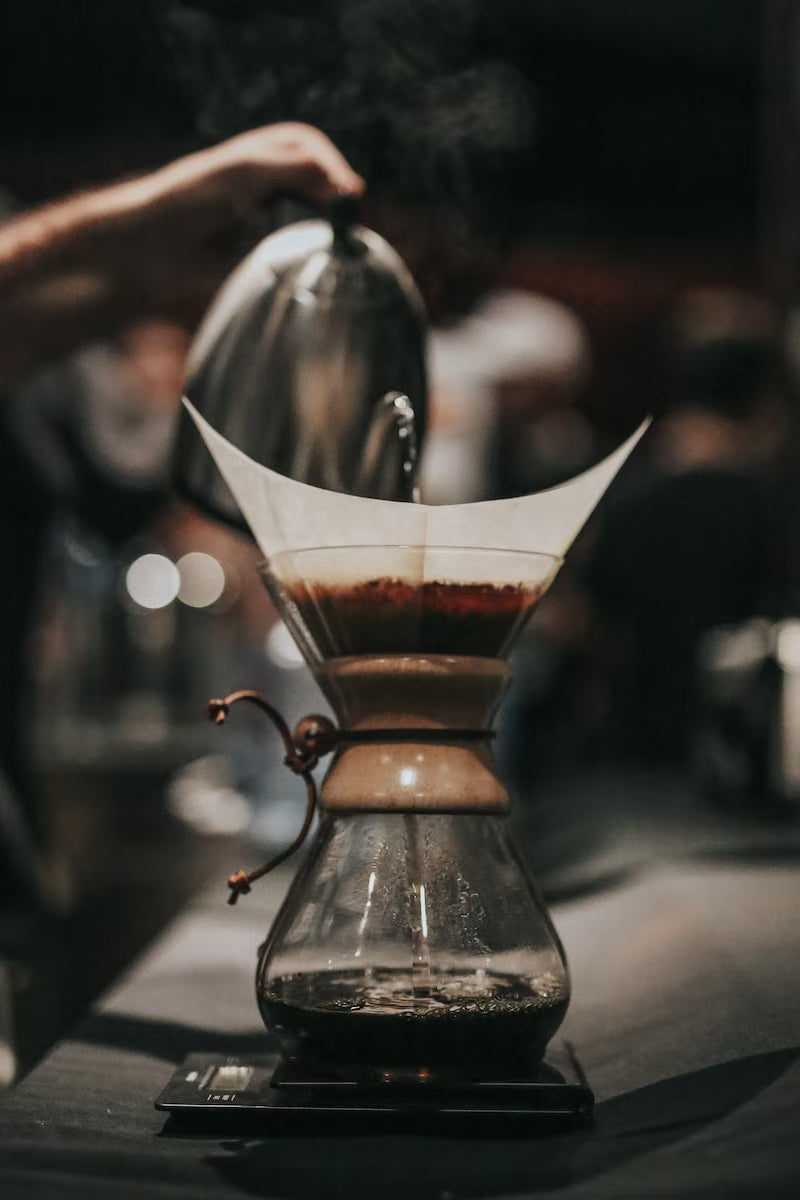Some friends recently popped around to explore pour over coffee with me.
I’d invited them over so that they could experience what I believe to be one of the most cost effective ways to enjoy great coffee at home, and they left feeling pretty excited.
As you’re no doubt aware there are a heap of ways to make coffee. The major difference in my mind lies in the amount of pressure with which hot (close to or actually boiling) water is brought into contact with ground coffee. The amount of pressure varies by method: gravity fed when making pour over or filter coffee; slightly more pressure coming from steam when using a stove pot; even more pressure when pushing down on an AeroPress; much more pressure when using a lever to amplify the force of your arm when using a manual lever; and the full 9 bar pressure experience of a mechanical pump machine or spring lever. A simplistic way of looking at it is that you pay more (both in terms of money and also bench space) the more pressure you want to apply to your coffee making.
Pour over requires paper filters, an appropriately shaped funnel into which to fit those filters, a set of kitchen scales and (optionally) a coffee grinder. Of course I can pre-grind coffee beans for you, however a significant upgrade, at modest cost, is to grind your beans so that coffee grounds are at their freshest when you are about to brew.
The method:
- Pour 30 g of freshly ground coffee into the filter paper, level out the coffee by agitating your funnel;
- Put your coffee container on a set of scales and get your phone ready to time your coffee extraction;
- Start your phone timer and slowly pour 100 g of water onto your coffee. Try to pour in a circular motion to keep the grounds moving slightly;
- Let that mix of water and coffee “bloom” (release carbon dioxide) for 30 seconds;
- Stir the coffee and water at this point to even out the coffee’s turbidity;
- When the water level starts to fall top up the water until you’ve poured a total of 480 g of water (ideally we use a 16:1 ratio of water to coffee when making pour over);
- If your extraction takes about three and a half minutes then I’d suggest you’ve got your coffee grind about right. If the extraction takes significantly longer then make the grind coarser and start again, if the extraction is significantly shorter then make the grind finer and start again;
- Enjoy a beautiful cup of pour over.
Pour over coffee is different from espresso. Beans for pour over are generally roasted to a lighter level (think medium rare rather than medium well) which emphasises fruit as well as acidity. I find that pour over is very clean and beautifully expressive of the flavours inherent in the coffee bean. It’s less viscous and less oily than espresso as a result of the filter paper and the much higher amount of water in the coffee.
If you haven’t tried pour over coffee before I’d suggest that it is definitely worth your time to have a go. I’m happy to make some for you if you let me know!
I’m hoping the above has been interesting and useful. Let me know if you’d like any pour over coffee equipment recommendations.
To learn about green coffee supply and demand click here
To hear about featuring in Good Food Sydney Morning Herald click here

